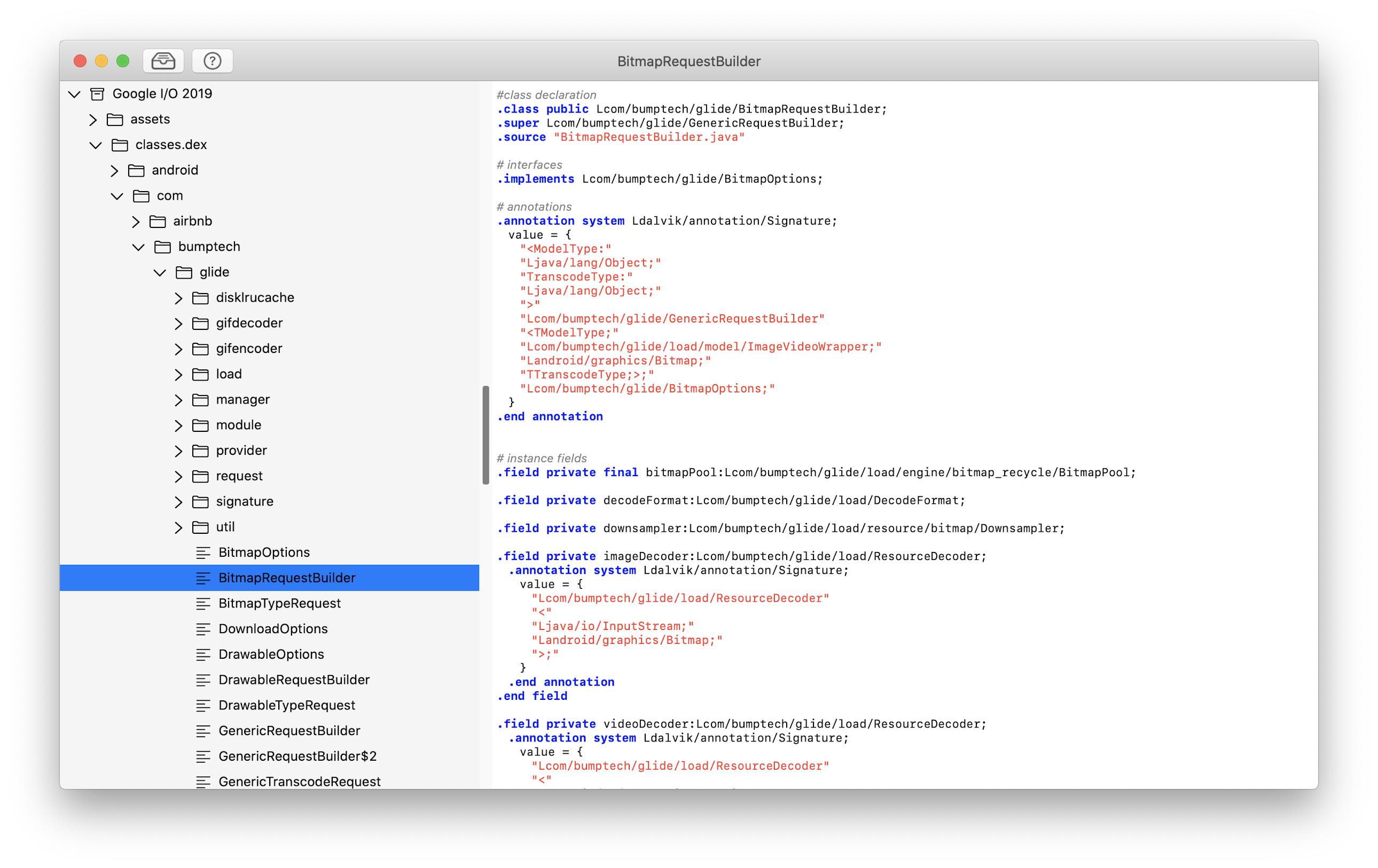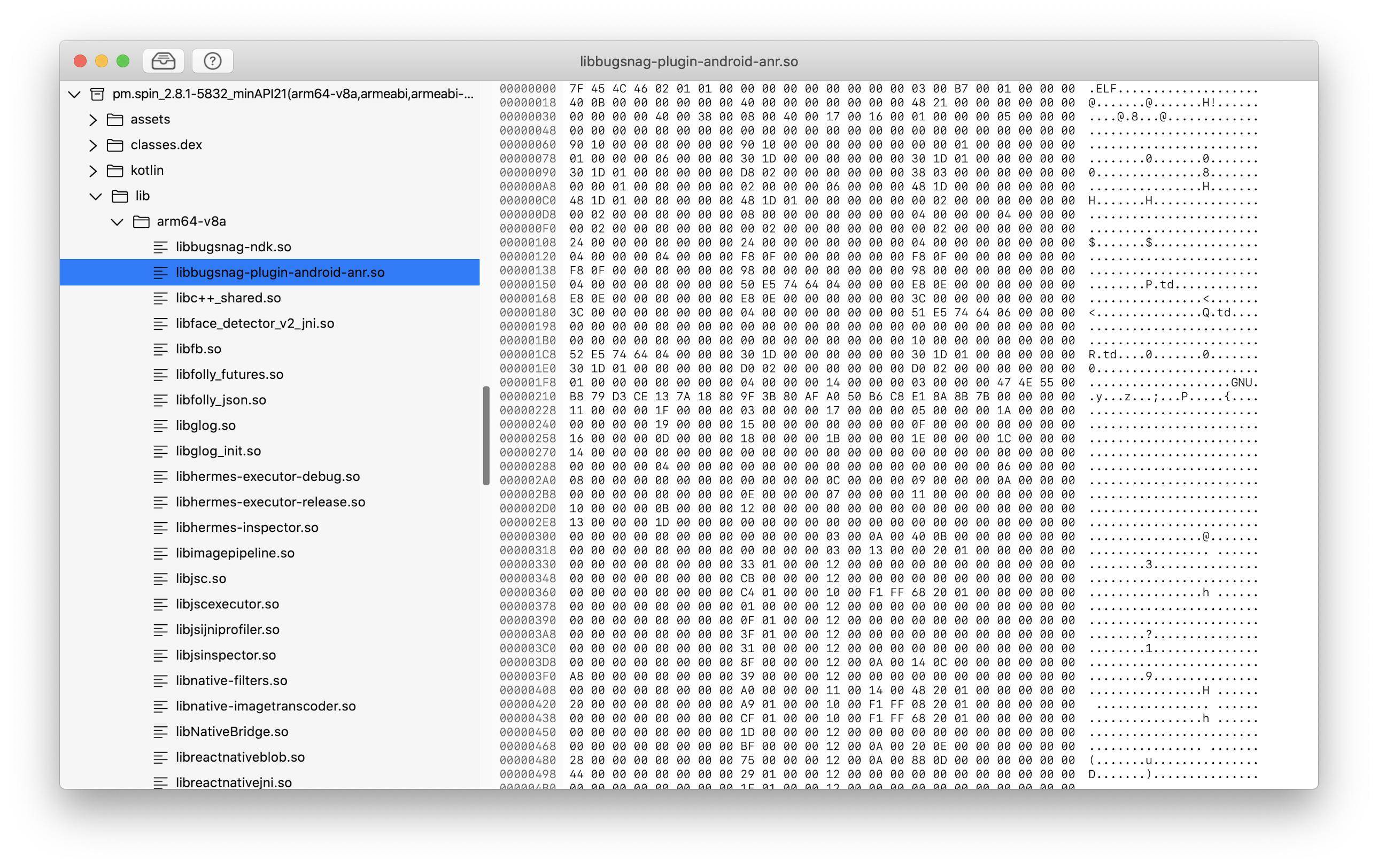1. Extracting the source from a native Android application
The source code of a native Android application is not difficult to obtain, but it does require extra tools that are compatible with Windows, Mac, and Linux. My personal favorites when it comes to tools are dex2jar and JD-GUI.
If you’re unfamiliar with these tools, dex2jar will read Dalvik Executable files and convert them to the standard JAR format. JD-GUI will read JAR files and decompile the class files found in them.
To make the extraction process easier to understand, let’s start by creating a fresh native Android project:
android create project --target 19 --name TestProject --path . --activity TestProjectActivity --package com.nraboy.testproject
The above command will leave you with an Android project in your current command prompt path.
Since our project has an Activity class already included, lets jump straight into the build process. You can give me a hard time all day long about using Ant instead of Gradle or Maven, but for this tutorial I’m going to stick with it.
ant debug
The above command will create a debug build typically found at bin/TestProject-debug.apk.
Using your favorite unzip tool, extract the APK file. 7-zip is a popular tool, but if you’re on a Mac you can just run the following from the Terminal:
unzip TestProject-debug.apk
This will leave us with a bunch of files and folders, but one is important to us. Make note of classes.dex because it contains all of our source code. To convert it into something readable we need to run dex2jar on it. You can use dex2jar on Mac, Linux, and Windows, but I’m going to explain from a Mac perspective.
With the classes.dex file in your extracted dex2jar directory, run the following from the Terminal:
./dex2jar.sh classes.dex
Open the JD-GUI application that you downloaded because it is now time to decode the JAR and packaged class files. Open the freshly created classes_dex2jar.jar file and you should see something like the following:
![enter image description here]() See how easy it was to get to the source code of your native Android APK? Now what can you do to better protect yourself?
See how easy it was to get to the source code of your native Android APK? Now what can you do to better protect yourself?
The Android SDK ships with Proguard, which is a obfuscation module. What is obfuscation you ask?
Obfuscation via Wikipedia:
Obfuscation (or beclouding) is the hiding of intended meaning in
communication, making communication confusing, willfully ambiguous,
and harder to interpret.
While obfuscation will not encrypt your source code, it will make it more difficult to make sense of. With Proguard configured, run Ant in release mode and your code should be obfuscated on build.
2. Extracting the source from a hybrid Android application
The source code of hybrid applications are by far the easiest to extract. You don’t need any extra software installed on your computer, just access to the APK file.
To make things easier to understand, lets first create a fresh Apache Cordova project and then extract it. Start by doing the following:
cordova create TestProject com.example.testproject TestProject
cd TestProject
cordova platform add android
During the project creation process you are left with the default Apache Cordova CSS, HTML, and JavaScript templates. That is fine for us in this example. Let’s go ahead and build our project into a distributed APK file:
cordova build android
You’re going to be left with platforms/android/ant-build/CordovaApp-debug.apk or something along the lines of platforms/android/ant-build/*-debug.apk.
Even though this is a debug build, it is still very usable. With 7-zip or similar installed, right click the APK file and choose to extract or unzip it. In the extracted directory, you should now have access to all your web based source files. I say web based because any Java files used by Apache Cordova will have been compiled into class files. However, CSS, HTML, and JavaScript files do not get touched.
You just saw how depressingly easy it is to get hybrid application source code. So what can you do to better protect yourself?
You can uglify your code, which is a form of obfuscation.
Doing this will not encrypt your code, but it will make it that much more difficult to make sense of.
If you want to uglify your code, I recommend you install UglifyJS since it is pretty much the standard as of now. If you prefer to use a task runner, Grunt and Gulp have modules for UglifyJS as well.





javac -decompile, which would then fit SO guidelines. It appears to me that the answers are off-topic, not the question. – Rodriquez